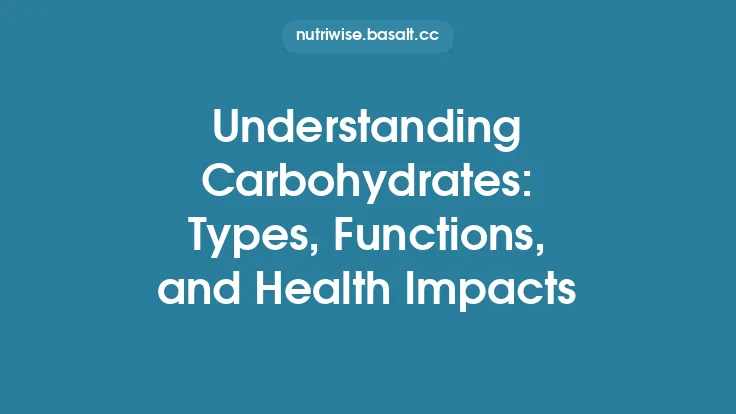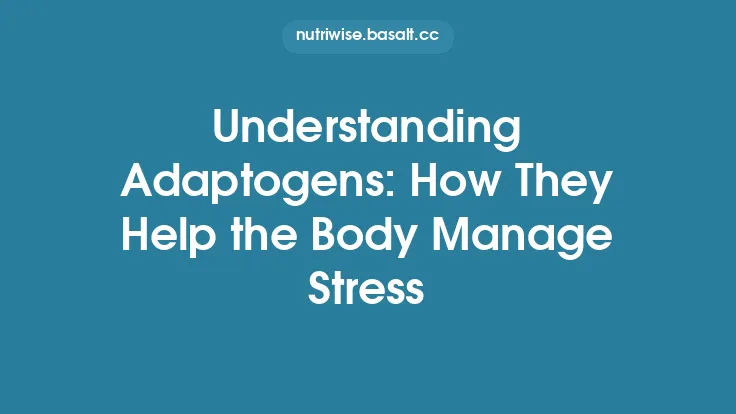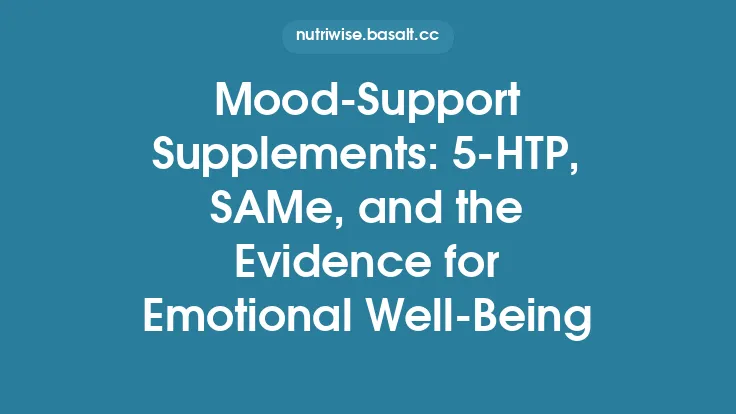The modern world has turned stress into a near‑constant companion, and its fingerprints are evident not only in our thoughts and emotions but also in the very workings of our digestive system. Decades of research have revealed that the gut and the brain are linked by a complex network of signaling routes that allow each organ to influence the other in real time. When stress spikes, this bi‑directional communication can become dysregulated, leading to changes in gut motility, permeability, microbial composition, and ultimately mood. Understanding the underlying pathways provides a foundation for interpreting why anxiety, depression, and gastrointestinal complaints often travel together, and it opens avenues for more nuanced therapeutic approaches.
The Physiological Basis of Stress and Its Systemic Reach
Stress activates the hypothalamic‑pituitary‑adrenal (HPA) axis, a central neuroendocrine circuit that culminates in the secretion of glucocorticoids—primarily cortisol in humans. Cortisol exerts widespread effects: it mobilizes energy stores, modulates immune function, and influences neuronal excitability. Parallel to the HPA axis, the sympathetic branch of the autonomic nervous system releases catecholamines (norepinephrine and epinephrine), which prepare the body for “fight‑or‑flight” responses. Both systems have receptors distributed throughout the gastrointestinal tract, meaning that the gut is directly exposed to stress hormones and neurotransmitters.
Key points:
- Cortisol receptors (GR and MR) are present on intestinal epithelial cells, immune cells in the lamina propria, and enteric neurons, allowing glucocorticoids to modulate barrier function, cytokine production, and motility.
- Adrenergic receptors on smooth muscle and enterochromaffin cells mediate rapid changes in peristalsis and secretion during acute stress.
- Stress‑induced changes in blood flow can alter nutrient delivery and oxygenation, influencing the metabolic environment of the gut lumen.
These systemic signals set the stage for the gut to either adapt to or be compromised by stress, depending on the duration and intensity of the exposure.
Bidirectional Communication Pathways Between Gut and Brain
The gut‑brain axis comprises several overlapping routes that convey information in both directions:
- Neural Pathways – While the vagus nerve is the most studied conduit, spinal afferents (particularly the splanchnic nerves) also transmit visceral signals to the brainstem and higher cortical centers. These fibers carry mechanical, chemical, and inflammatory cues from the gut wall.
- Endocrine Signals – Beyond classic satiety hormones, the gut releases a suite of peptides (e.g., neurotensin, peptide YY) and hormones (e.g., cortisol‑binding globulin) that can cross the blood‑brain barrier or act on circumventricular organs lacking a tight barrier.
- Immune Mediators – Cytokines produced by gut‑associated immune cells (IL‑1β, IL‑6, TNF‑α) can reach the central nervous system (CNS) via active transport mechanisms or by stimulating peripheral afferents, thereby influencing mood and cognition.
- Metabolic By‑products – Microbial metabolites such as tryptamine, indole derivatives, and certain bile acid species act as signaling molecules that can modulate neuronal activity directly or indirectly through receptor pathways (e.g., aryl hydrocarbon receptor, trace amine‑associated receptors).
These channels operate simultaneously, creating a dynamic feedback system where alterations in one component reverberate throughout the network.
Microbiota‑Mediated Modulation of Mood
The trillions of microorganisms inhabiting the colon constitute a living organ that interacts intimately with host physiology. Stress can reshape the microbial ecosystem, and the resulting dysbiosis can, in turn, affect brain function through several mechanisms:
- Altered Production of Neuroactive Compounds – Certain bacterial taxa synthesize γ‑aminobutyric acid (GABA), serotonin precursors, and catecholamines. Shifts in their abundance can change the pool of these molecules available to the host.
- Modulation of Tryptophan Metabolism – The kynurenine pathway, which diverts tryptophan away from serotonin synthesis toward neuroactive metabolites (kynurenic acid, quinolinic acid), is highly sensitive to inflammatory signals. Dysbiotic microbes can amplify this diversion by stimulating host immune cells.
- Bile Acid Transformation – Gut bacteria convert primary bile acids into secondary forms that can activate receptors such as TGR5 and FXR, influencing both metabolic homeostasis and neuroinflammation.
- Barrier‑Related Effects – A balanced microbiota supports the integrity of the mucosal barrier; loss of beneficial species can predispose to “leaky gut,” allowing luminal antigens to trigger systemic inflammation that reaches the brain.
Collectively, these microbial actions provide a mechanistic link between chronic stress, altered gut ecology, and mood disturbances.
Immune and Inflammatory Crosstalk
Stress‑induced activation of the HPA axis and sympathetic nervous system reshapes the immune landscape of the gut. Glucocorticoids, while generally immunosuppressive, can paradoxically promote a pro‑inflammatory phenotype in the intestinal epithelium under chronic exposure. Key processes include:
- Upregulation of Pattern‑Recognition Receptors (PRRs) – Toll‑like receptors (TLR2, TLR4) become more responsive, amplifying cytokine release upon microbial ligand binding.
- Shift Toward Th17‑Dominated Responses – Chronic stress favors differentiation of Th17 cells, which secrete IL‑17 and contribute to mucosal inflammation.
- Increased Permeability‑Inducing Cytokines – IL‑6 and TNF‑α disrupt tight‑junction proteins (claudin‑1, occludin), facilitating translocation of bacterial components such as lipopolysaccharide (LPS) into circulation.
Systemic LPS and cytokines can activate microglia, the resident immune cells of the CNS, leading to neuroinflammation—a recognized contributor to depressive and anxiety‑like behaviors.
Neurotransmitter Precursors and Metabolic Pathways
While the gut does not produce the majority of central neurotransmitters, it supplies essential precursors and modulates their availability:
- Serotonin (5‑HT) – Approximately 90 % of the body’s serotonin is synthesized by enterochromaffin cells from dietary tryptophan. Stress can reduce the expression of tryptophan hydroxylase, limiting 5‑HT production, while simultaneously increasing the conversion of tryptophan to kynurenine.
- Dopamine and Norepinephrine – Certain Lactobacillus and Bifidobacterium strains possess enzymes that convert phenylalanine and tyrosine into catecholamines, influencing local gut motility and potentially signaling to the brain via vagal afferents.
- GABA – Some commensals (e.g., Bacteroides, Lactobacillus) generate GABA from glutamate. GABAergic signaling in the gut can affect enteric neuronal circuits and, through afferent pathways, modulate central anxiety circuits.
Understanding these metabolic routes clarifies how dietary substrates, microbial composition, and stress intersect to shape neurochemical balance.
Stress‑Induced Alterations in Gut Barrier Integrity
The intestinal epithelium functions as a selective barrier, permitting nutrient absorption while restricting the passage of pathogens and toxins. Stress compromises this barrier through several converging mechanisms:
- Tight‑Junction Disruption – Cortisol and catecholamines downregulate the transcription of tight‑junction proteins and promote their phosphorylation, leading to increased paracellular permeability.
- Mucus Layer Thinning – Stress hormones can reduce goblet cell mucin production, weakening the protective mucus layer that separates microbes from epithelial cells.
- Reduced Antimicrobial Peptide Secretion – Paneth cell defensin output is suppressed under chronic stress, diminishing innate defense.
The resulting “leaky gut” permits translocation of microbial metabolites and antigens, which can trigger systemic immune activation and feed back to the brain, perpetuating mood dysregulation.
Feedback Loops: How Mood Influences Gastrointestinal Function
The relationship is not unidirectional; emotional states exert powerful effects on gut physiology:
- Anxiety and Hyper‑Motility – Heightened sympathetic tone accelerates transit, often manifesting as diarrhea or abdominal cramping.
- Depression and Hypo‑Motility – Reduced parasympathetic activity can slow gastric emptying, leading to constipation and bloating.
- Psychogenic Pain – Central sensitization amplifies visceral pain perception, making normal gut distension feel uncomfortable.
These feedback loops create a self‑reinforcing cycle: stress alters gut function, which in turn generates signals that exacerbate stress and mood symptoms.
Implications for Mental Health and Clinical Perspectives
Recognition of the gut‑brain axis as a mediator of stress‑related mood disorders has prompted several clinical considerations:
- Biomarker Development – Measuring circulating cytokines, cortisol levels, and gut‑derived metabolites (e.g., kynurenine/tryptophan ratio) may aid in diagnosing stress‑linked gastrointestinal‑psychiatric comorbidities.
- Targeted Pharmacotherapy – Agents that stabilize the gut barrier (e.g., zonulin antagonists) or modulate microbial metabolism (e.g., specific enzyme inhibitors) are under investigation for adjunctive use in depression and anxiety.
- Psychobiotics – Live microbial formulations selected for their capacity to produce neuroactive compounds or attenuate inflammation represent a promising, though still emerging, therapeutic class.
- Integrative Approaches – Combining stress‑reduction techniques (e.g., cognitive‑behavioral therapy, mindfulness‑based stress reduction) with interventions aimed at gut health may yield synergistic benefits.
Future Directions in Research
The field continues to evolve, with several frontiers poised to deepen our understanding:
- Multi‑omics Integration – Coupling metagenomics, metabolomics, and transcriptomics with neuroimaging will clarify causal pathways linking stress, microbiota, and brain activity.
- Individualized Modeling – Machine‑learning algorithms that incorporate genetic, microbial, and psychosocial data could predict susceptibility to stress‑induced mood disturbances.
- Longitudinal Cohorts – Tracking stress exposure, gut barrier markers, and mental health outcomes over years will help disentangle temporal relationships and identify windows for early intervention.
- Novel Signaling Molecules – Beyond the well‑studied metabolites, emerging evidence points to microbial-derived sphingolipids, polyamines, and extracellular vesicles as potential modulators of neuroimmune communication.
By mapping these intricate networks, researchers aim to translate mechanistic insights into tangible strategies for preventing and treating the intertwined challenges of stress, gut dysfunction, and mood disorders.





